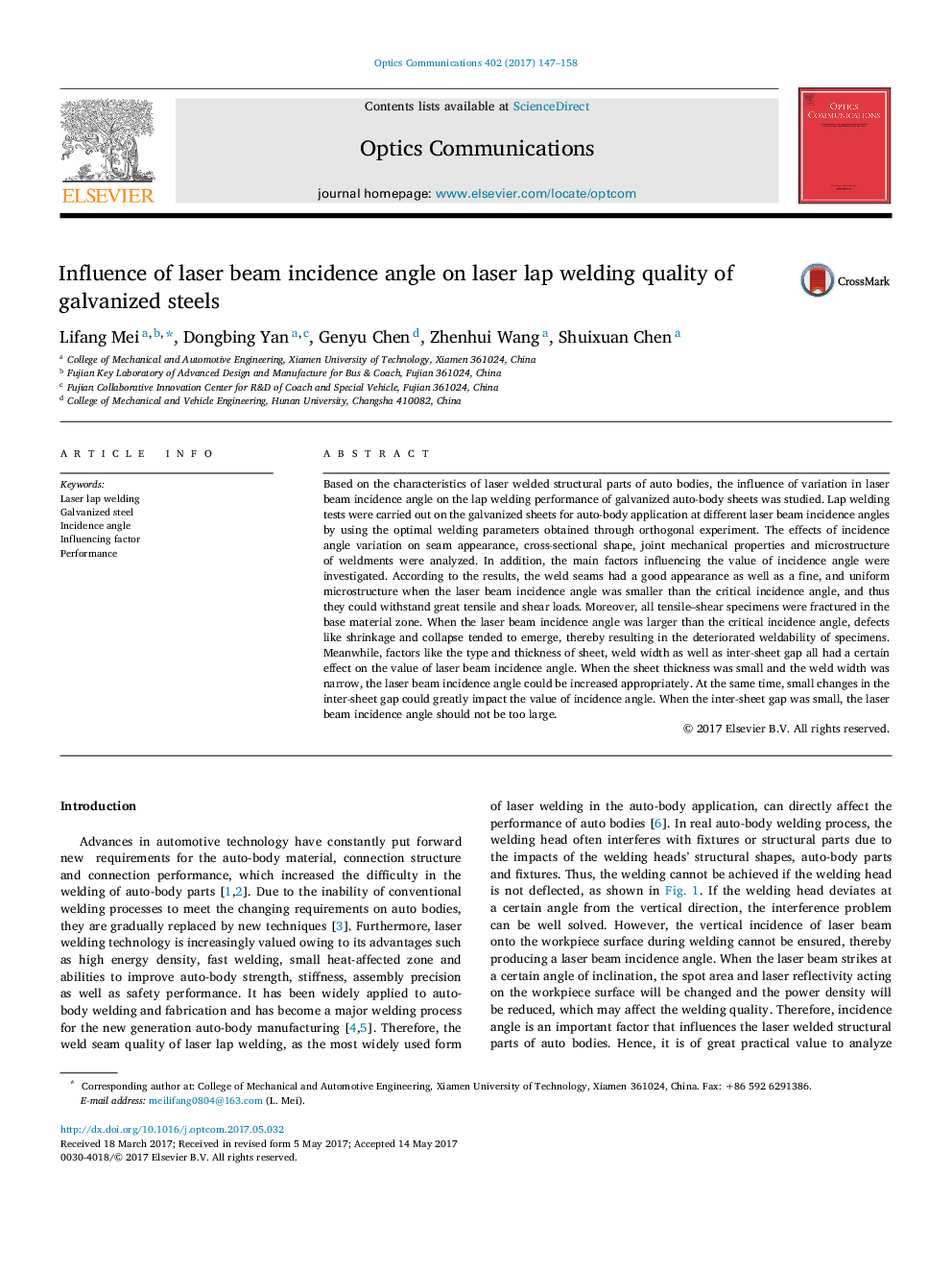| Article ID | Journal | Published Year | Pages | File Type |
|---|---|---|---|---|
| 5449105 | Optics Communications | 2017 | 12 Pages |
Abstract
Based on the characteristics of laser welded structural parts of auto bodies, the influence of variation in laser beam incidence angle on the lap welding performance of galvanized auto-body sheets was studied. Lap welding tests were carried out on the galvanized sheets for auto-body application at different laser beam incidence angles by using the optimal welding parameters obtained through orthogonal experiment. The effects of incidence angle variation on seam appearance, cross-sectional shape, joint mechanical properties and microstructure of weldments were analyzed. In addition, the main factors influencing the value of incidence angle were investigated. According to the results, the weld seams had a good appearance as well as a fine, and uniform microstructure when the laser beam incidence angle was smaller than the critical incidence angle, and thus they could withstand great tensile and shear loads. Moreover, all tensile-shear specimens were fractured in the base material zone. When the laser beam incidence angle was larger than the critical incidence angle, defects like shrinkage and collapse tended to emerge, thereby resulting in the deteriorated weldability of specimens. Meanwhile, factors like the type and thickness of sheet, weld width as well as inter-sheet gap all had a certain effect on the value of laser beam incidence angle. When the sheet thickness was small and the weld width was narrow, the laser beam incidence angle could be increased appropriately. At the same time, small changes in the inter-sheet gap could greatly impact the value of incidence angle. When the inter-sheet gap was small, the laser beam incidence angle should not be too large.
Related Topics
Physical Sciences and Engineering
Materials Science
Electronic, Optical and Magnetic Materials
Authors
Lifang Mei, Dongbing Yan, Genyu Chen, Zhenhui Wang, Shuixuan Chen,
